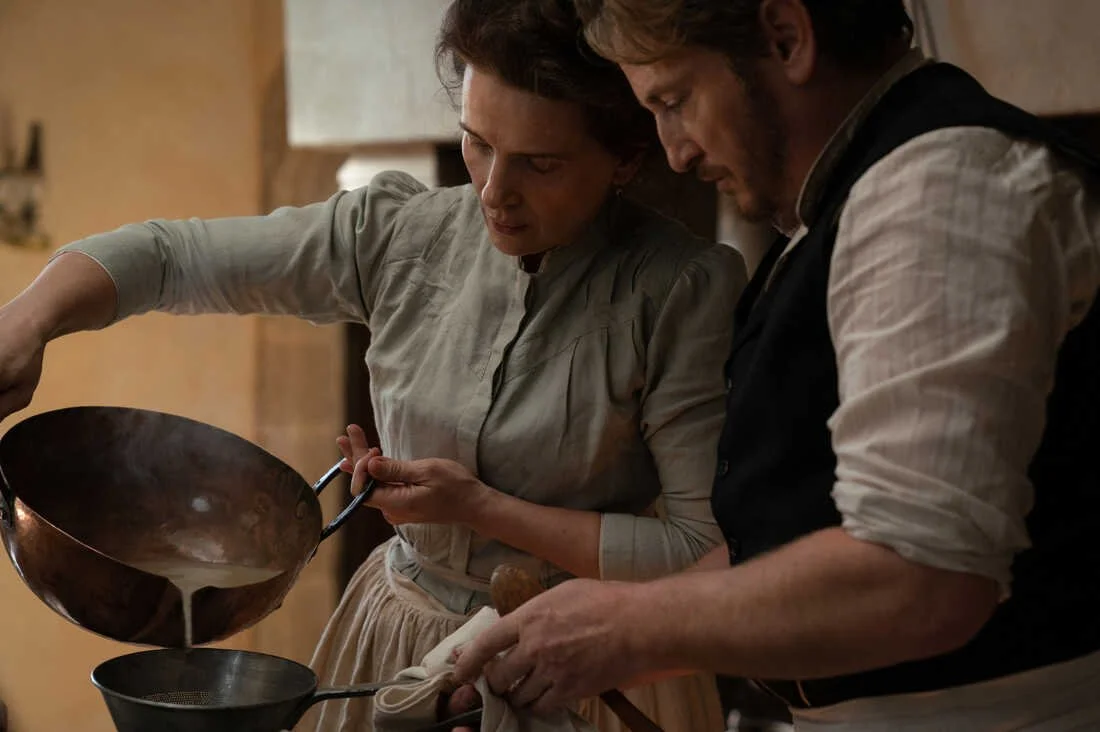EMLILA PÉREZ
Directing: B+
Acting: A-
Writing: B+
Cinematography: A-
Editing: A
Music: B
There’s a lot going on in Emilia Pérez—some might argue too much. It’s a Mexican cartel movie; it’s a story about a trans woman’s self-actualization; it’s a musical. I kept wondering how this movie might most succinctly be encapsulated as a logline or an elevator pitch.
More than anything, the musical element is the easiest to be ambivalent about. I remain unsure as to what the point of it is. Never mind the somewhat dubious nature of Zoe Saldaña playing the protagonist when hers is not the trans character, within minutes we witness her as Mexico City defense attorney to crooks, Rita—who breaks into song while walking through the streets, providing some exposition in a fairly economical way. The crowded streets become part of an intricate ballet of modern dancers around her, with choreography that is undeniably impressive. Saldaña’s singing is competent, and this scene provides a preview to what’s to come: a film that is a musical in the most fundamental and traditional sense of the word, characters sometimes even singing lines that would make far more sense uttered straight.
Mind you, the presentation of musical numbers is the only conventional thing about Emilia Pérez. How many traditional musicals have you seen about drug cartels, or that revolve around the transition of a trans woman, let alone both? This movie has songs about gender-affirming surgery, and there really is a moment when a Chinese surgeon in Bangkok utters the line, “From penis to vagina?”—in song.
The quality of the songs, by French singer Camille (with a score composed by Clément Duco), is spotty. The singing of lines between Rita and an Israeli surgeon upon their first meeting makes little sense. But there are deeply touching musical moments too, such as the child of a post-transition parent singing about how she smells like the father he remembers.
That brings me to Karla Sofía Gascón, the 52-year-old trans actress who plays the title character and the Mexican cartel leader pre-transition. We see her first as “Manitas Del Monte,” and when we later see her as Emilia, it is a stunning revelation. Gascón’s performance as Manitas is astonishing in retrospect, an unusual sort of layered performance that skirts the boundaries of meta storytelling. She is also incredible as Emilia, filling the screen with her unforgettable presence. Gascón, as it happens, has 41 acting credits on IMDb, 37 of them from before her transition in 2018. If nothing else, we can rest assured that director Jacques Audiard cast a trans actress for this role.
Oh, did I mention that Emilia Pérez is actually a French film? As in: it’s a French production, filmed in a studio near Paris. No French is spoken, however, due to the setting being largely in Mexico City—recreated in studio. Presumably the same was done in other settings, from China to Switzerland to Israel to England. A surprising amount of the dialogue—and singing—is done in English, a logical choice given how common it is for people who don’t speak each other’s native languages to default to English in order to communicate.
I was particularly struck by Selena Gomez as Jessi, a woman convinced she has been widowed when Emilia’s transition coincides with the faking of Manitas’s death. Gomez is reportedly dissatisfied with her performance of Spanish dialogue, as she is not fluent, but for those of us watching who are also not fluent, she was excellent. Furthermore, Gomez gives a consistently flat and muted delivery of her lines in the Hulu series Only Murders in the Building, and if that’s the extent of your familiarity with her as an actor you would never expect the kind of performance you see here. I might be tempted to say she has a shot at an Oscar nomination, if not for the fact that she is given far less juicy material than her costars.
How in the world does Rita fit into all of this, you might quite reasonably be asking? Rita herself asks this, when a pre-transition Emilia has her abducted and then offers millions for her assistance in finding a surgeon who can be discreet enough not to endanger her. Rita is merely a high-powered lawyer. In the end, you could say she was tapped for her powers of persuasion.
To the significant credit of Jacques Audiard and his co-writers Thomas Bidegain, Nicolas Livecchi and Léa Mysius, Emilia Pérez takes frequent unexpected turns, is utterly unpredictable, and is always absorbing. It’s also a tad chaotic, and there is a shocking moment at the end that I truly did not see coming and am still unsure how I feel about. This film is already being met with deeply mixed responses, some finding it an incredibly original work of art and some finding it outright offensive. I find myself falling in the middle, but leaning slightly toward impressed by how well its boldness somehow actually works. This is an international feature in every sense of the phrase, and its very existence is extraordinary.
The cis-het gaze: Zoe Sadaña offers some star power assistance.
Overall: B+










